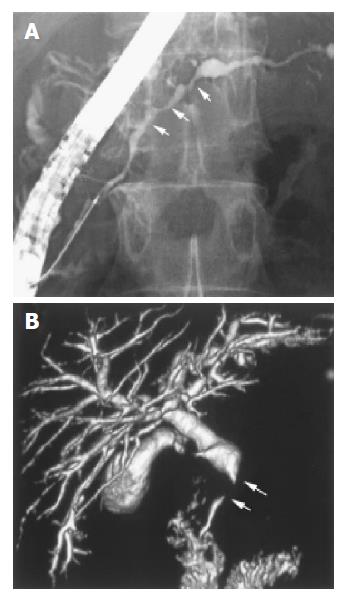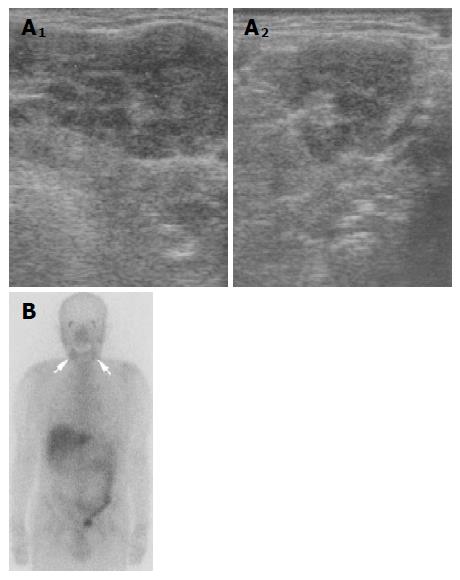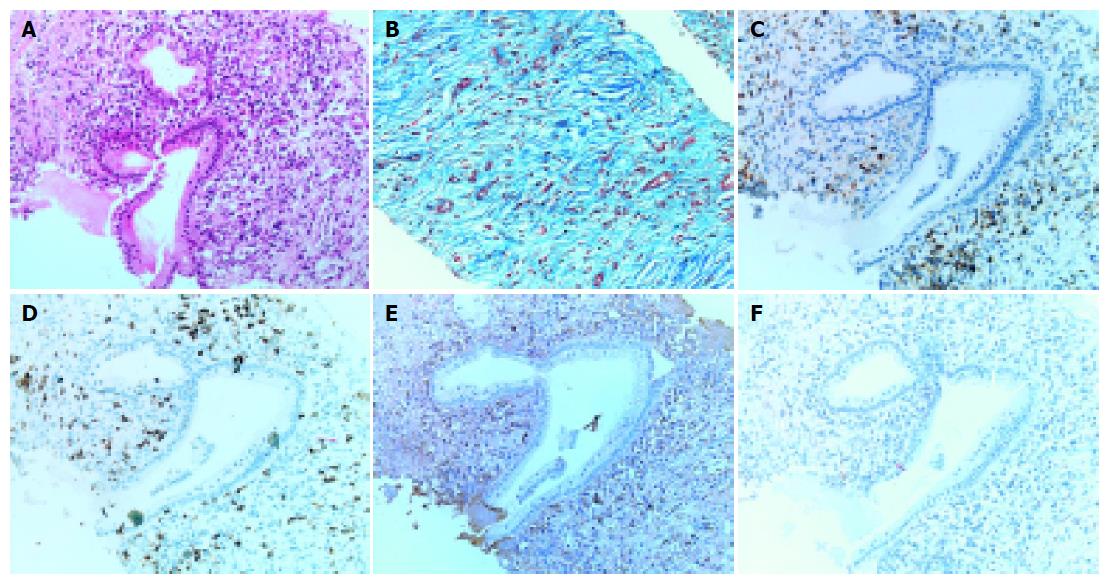Copyright
©2005 Baishideng Publishing Group Inc.
World J Gastroenterol. Sep 21, 2005; 11(35): 5577-5581
Published online Sep 21, 2005. doi: 10.3748/wjg.v11.i35.5577
Published online Sep 21, 2005. doi: 10.3748/wjg.v11.i35.5577
Figure 1 Abdominal CT scans on admission.
Note the diffuse enlargement of the pancreas and wall thickness of the enlarged common bile duct (CBD) (white circle) (A, B). Abdominal CT scans taken at 3 mo after treatment. Note the improvement in pancreatic swelling and CBD (C, D).
Figure 2 ERP (A) and DIC-CT (B) on admission.
A: Note the diffuse irregular narrowing of the main pancreatic duct (arrow); B: Note the smooth stenosis of the common bile duct (arrow) and dilatation of the distal portion of the biliary tract.
Figure 3 Neck US (A) and Ga scintigraphy (B) on admission.
Note the diffuse swelling (A) and abnormal uptake (B: arrow) in the bilateral salivary glands.
Figure 4 Histological examination of pancreatic specimen obtained by needle biopsy.
Note the extensive fibrosis, acinar atrophy, infiltration of lymphocytes and plasma cells were seen. The infiltrates were observed predominantly around the pancreatic duct (A: hematoxylin and eosin staining; B: Masson staining). These infiltrates consisted mainly of CD4- or CD8-positive T lymphocytes, and CD20-negative and IgG4-positive plasma cells (C-F: immunostaining of CD4, 8, IgG4, and CD20 respectively).
Figure 5 Histopathological examination of the liver (A and B) and salivary gland (C and D) specimens obtained by needle biopsy.
Note the infiltrated lymphocytes and IgG4-positive plasma cells in the portal area, around the ducts of the salivary gland (A and C: hematoxylin and eosin staining, B and D: immunostaining of IgG4).
- Citation: Taguchi M, Aridome G, Abe S, Kume K, Tashiro M, Yamamoto M, Kihara Y, Nakamura H, Otsuki M. Autoimmune pancreatitis with IgG4-positive plasma cell infiltration in salivary glands and biliary tract. World J Gastroenterol 2005; 11(35): 5577-5581
- URL: https://www.wjgnet.com/1007-9327/full/v11/i35/5577.htm
- DOI: https://dx.doi.org/10.3748/wjg.v11.i35.5577













